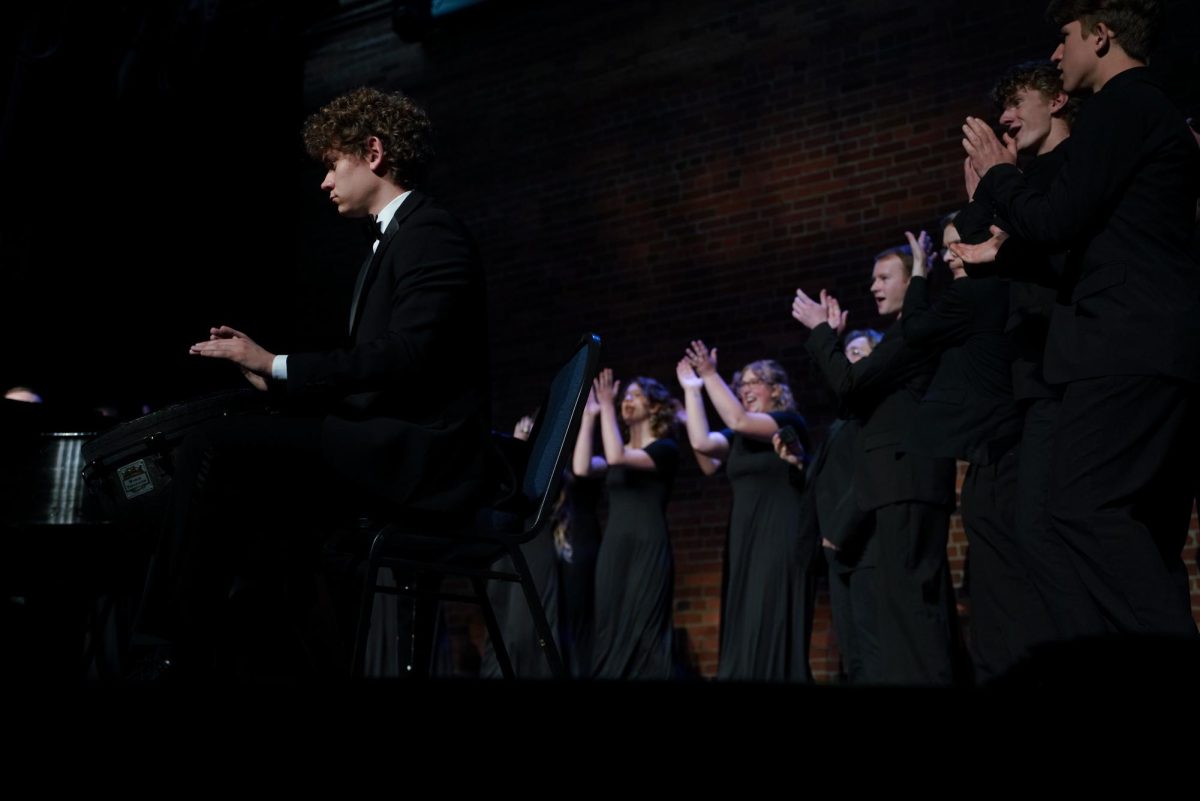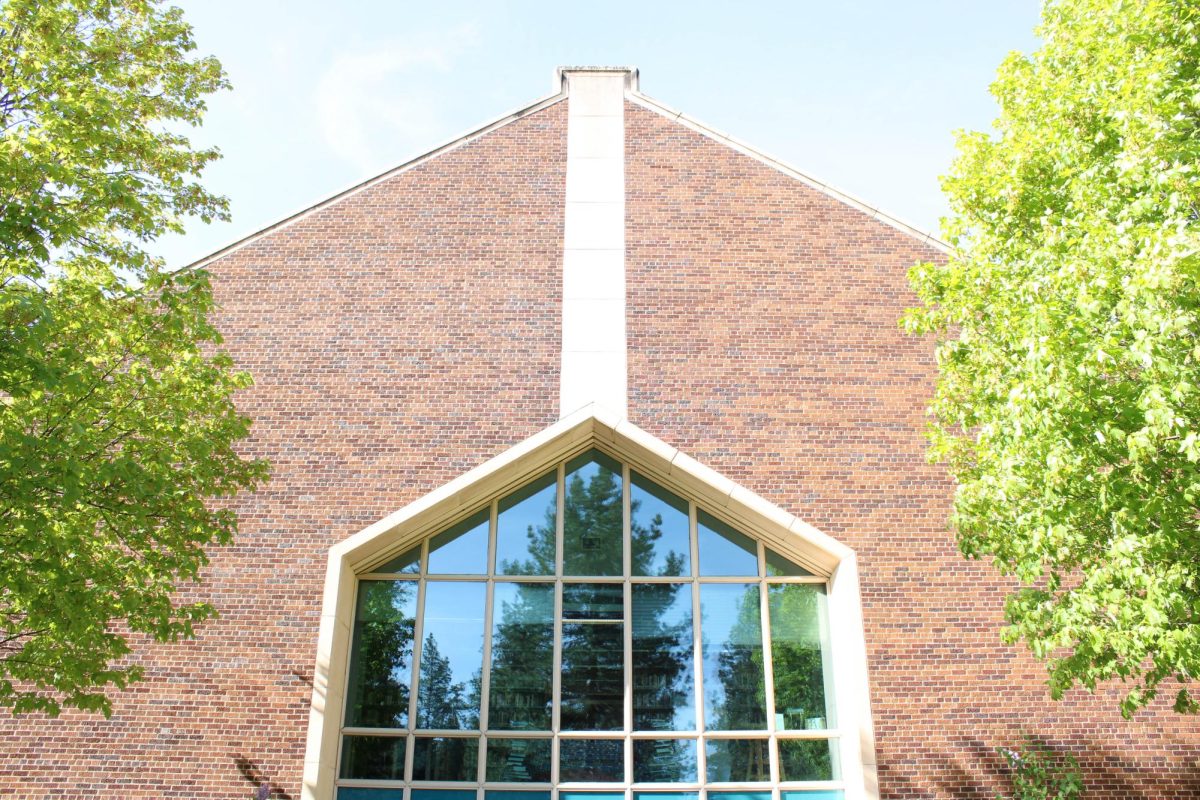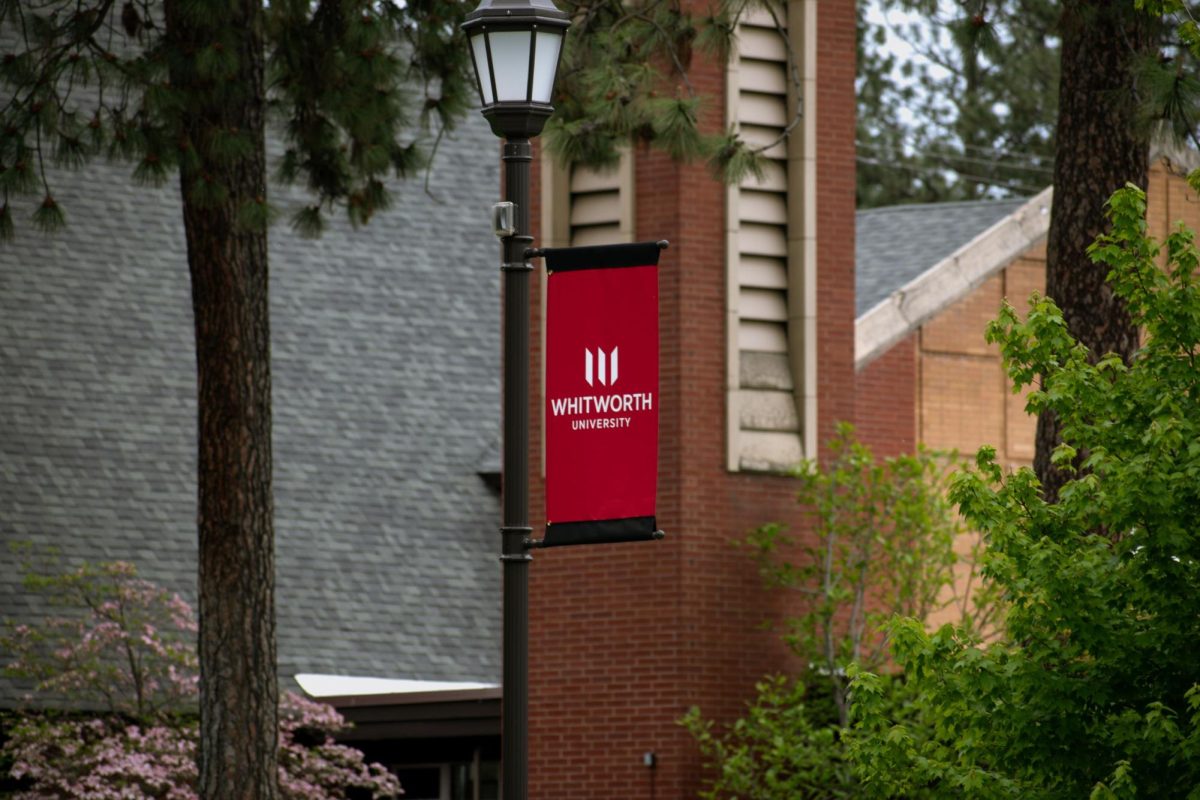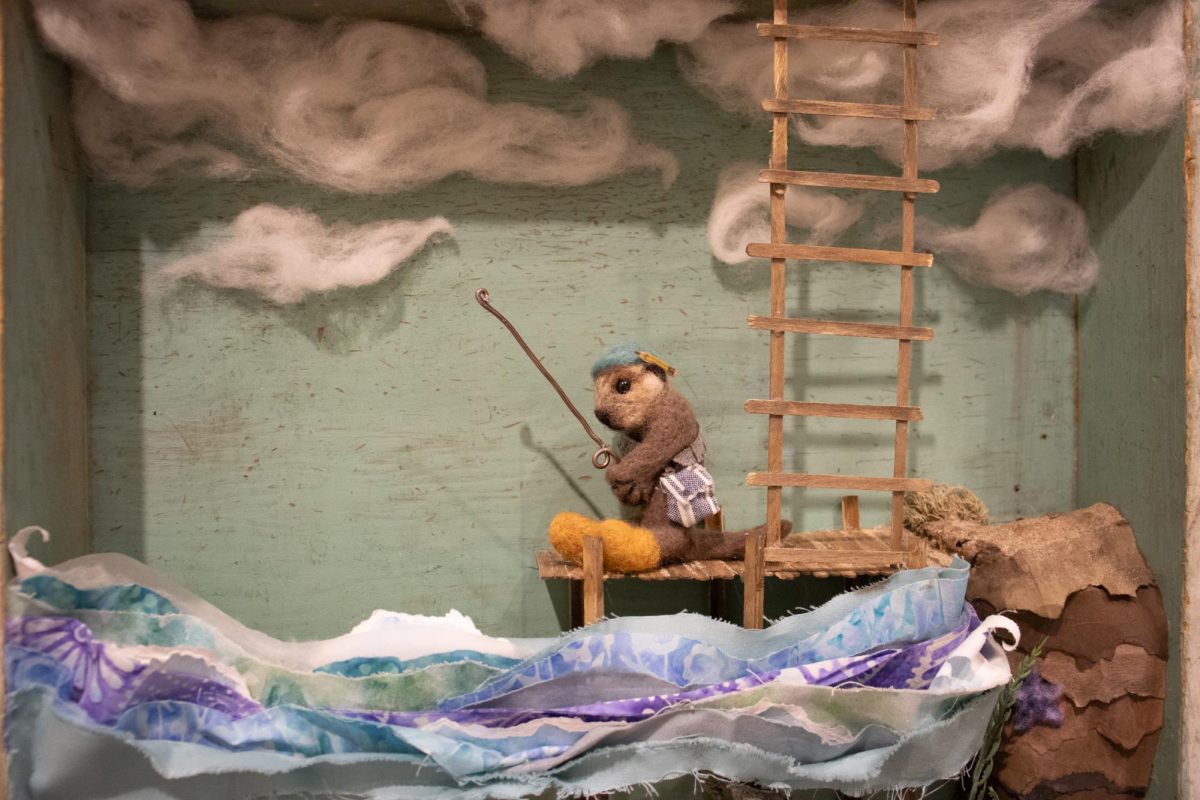Art ned not be formal or traditional; it can come from materials least expected. This is very true around campus, where masterpieces of sorts made of unconventional materials are cropping up.
Mosaics constructed of Post-It notes adorn the walls of the HUB and many academic buildings. Each student in the Intro to Photoshop class, including freshman Domenica Cooke-Tassone, created the murals as part of a project to learn about pixels.
Each project is created out of approximately 500 Post-It notes, and each note is divided into nine sections, said Cooke-Tassone, who pieced together a piano on the band room wall. Because of the limited color scheme Post-It notes provide, the project was “artistic because you had to do your own interpretation of the colors,” Cooke-Tassone said.
“When you’re close to it, it doesn’t look like anything. You have to stand back to see the picture,” Cooke-Tassone said.
In a similar vein, a bird created out of mirror shards decorates the lounge wall of Ballard’s second floor. Created by sophomore Katrina Ulnick, the bird represents the culture of “upcycling” and finding beauty in unlikely places.
When she stepped on and broke her new mirror, she debated for days about what to do with it, since she did not want to throw it away, Ulnick said. Inspired by “Freak Alley” in Boise, an alley covered in street art and mirror mosaics, Ulnick started with the wing and the project grew from there.
“Over a period of three days I’d just add a piece or two every time I passed it and it became a bird. There’s always a way to reuse things,” Ulnick said.
Creating art out of garbage, or simply any unused materials that you already possess, does not have to be difficult and is not only for people who identify themselves as artistic. For example, if you want to make something beautiful out of nothing, there are many simple, functional and artistic projects utilizing commonplace materials to get you started.
Picture frames are originally used to hold art or photography, and are easily transformed into creative yet functional decor for your dorm room. Whether you are artistic or not, using a picture frame to create a dry erase message board is an easy way to repurpose existing materials into something useful. This project should require minimal or no purchases.
Materials:
A used picture frame with glass intact—any size or shape can work
Paint (optional)
Fabric or paper
Glue
Step One:
Disassemble the frame. If desired, paint the frame any color of your choice or sand it to create a distressed effect.
Step Two:
Cover one side of the cardboard inside the frame with fabric, (this can be from the store, an old shirt or sheets—any pattern or color that you like, although a lighter color will be easier to see) wrapping paper, scrapbook paper or tissue paper, like you would when wrapping a present. Glue around the edges of the fabric or paper to attach them to the cardboard. Hot glue or tacky glue works best, but Elmer’s will suffice since the glass of the frame will hold it together.
Step Three:
Assemble the frame like you would if it contained a picture, and you are done. Use the new and creative dry erase board to leave reminders for yourself or write notes to your roommate.
An online tutorial of this idea can be found here.







 Spokane?
Spokane?